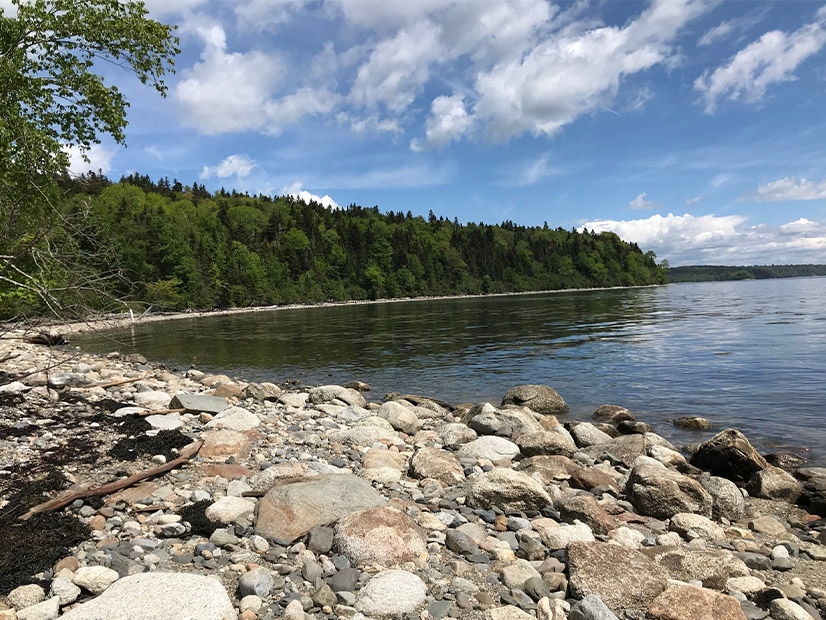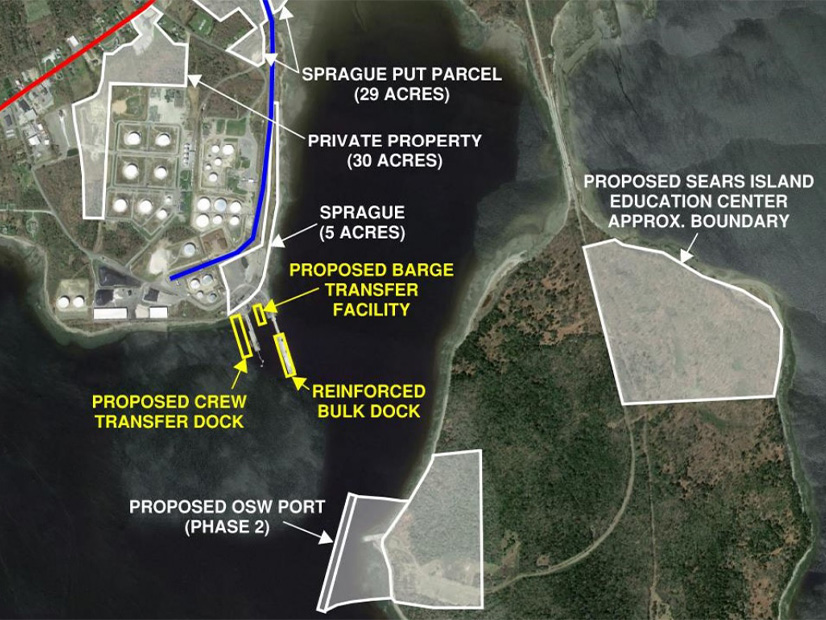
A 15-year-old consensus agreement for development on Maine’s Sears Island highlights potential challenges the Department of Transportation might face for its interest in building an offshore wind hub there.
The former Sears Island Planning Initiative steering committee executed an agreement in 2007 that said any future development in the Port of Searsport should consider Mack Point a priority location over the adjacent Sears Island.
MaineDOT, however, said last fall that, after evaluating four sites at the Port of Searsport, an undeveloped parcel on Sears Island would be its preferred location for an OSW marshalling and fabrication facility and a component staging area. The study also determined that Mack Point could provide support facilities for the Sears Island hub.
“The history and discussion of appropriate uses for the Port of Searsport, including Sears Island, have a long, detailed and potentially contentious history,” MaineDOT Commissioner Bruce Van Note told the recently established Maine OSW Port Advisory Group on Thursday.
MaineDOT established the 19-member advisory group in March to advise the department on port facility planning and development. The advisory group functions as a companion effort to Maine’s OSW roadmap initiative, which includes a working group that is making recommendations for port development.
At the time the Sears Island consensus agreement was signed, OSW was not on the horizon for Maine, but similar activities, such as a marine cargo or container port, were considered viable for the island’s western shore.
MaineDOT “concluded that a … marshalling port facility to support offshore wind does meet the requirements of acceptable uses on Sears Island” as set out in the agreement, Van Note said.

Steve Miller, speaking on behalf of the Islesboro Islands Trust, disagreed with Van Note during the meeting, saying that identifying Sears Island as the preferred alternative for the OSW hub goes against the planning initiative’s intentions.
“I think it makes sense to give preference to Mack Point, thoroughly exhaust those kinds of possibilities there … and if it’s necessary in a deeper application or in any other way, to then explore the possibility of other sites,” Miller said.
Language in the agreement relating to what is acceptable for development on Sears Island raises certain questions, according to Miller. For example, he said that the agreement allows “compatibly managed marine transportation, recreation, education and conservation” as appropriate uses for the island, but it offers no definition of “compatible.”
While Miller was uncertain whether the consensus agreement is legally binding, he said it represents an opportunity for the state’s institutions to build trust with residents.
“The constituents that I represent are eager to see this offshore wind initiative get legs in the right time at the right place, but there’s very, very deep concern about the negative impacts to Sears Island and Upper Penobscot Bay,” he said.
Conservation
While the Sears Island Planning Initiative set out to determine the best use of the island, the resulting consensus agreement did nothing to solve the Sears Island “saga,” David Gelinas, a Penobscot Bay pilot and steering committee member, said during the meeting. Instead, it “kicked the can down the road 15 years” by calling for the permanent conservation of two-thirds of the island without setting a clear plan for MaineDOT’s development of the remaining one-third.
Former Gov. John Baldacci signed an executive order in 2009 directing MaineDOT to grant a conservation easement for 600 acres of the island, as recommended by the steering committee. The state did not, however, make the conservation “contingent upon getting the necessary permits that would allow the remaining 330 acres ever to be used for marine transportation, which is why we’re here now,” Gelinas said.
The island, he added, can host a variety of uses.
“I wholeheartedly embrace the concept of conservation and recreation uses coexisting with a marine transportation facility on Sears Island,” he said.
The advisory group will meet again in September to consider the state’s proposed purpose and need for an OSW hub and the reasonableness of proposed alternatives for the project.


